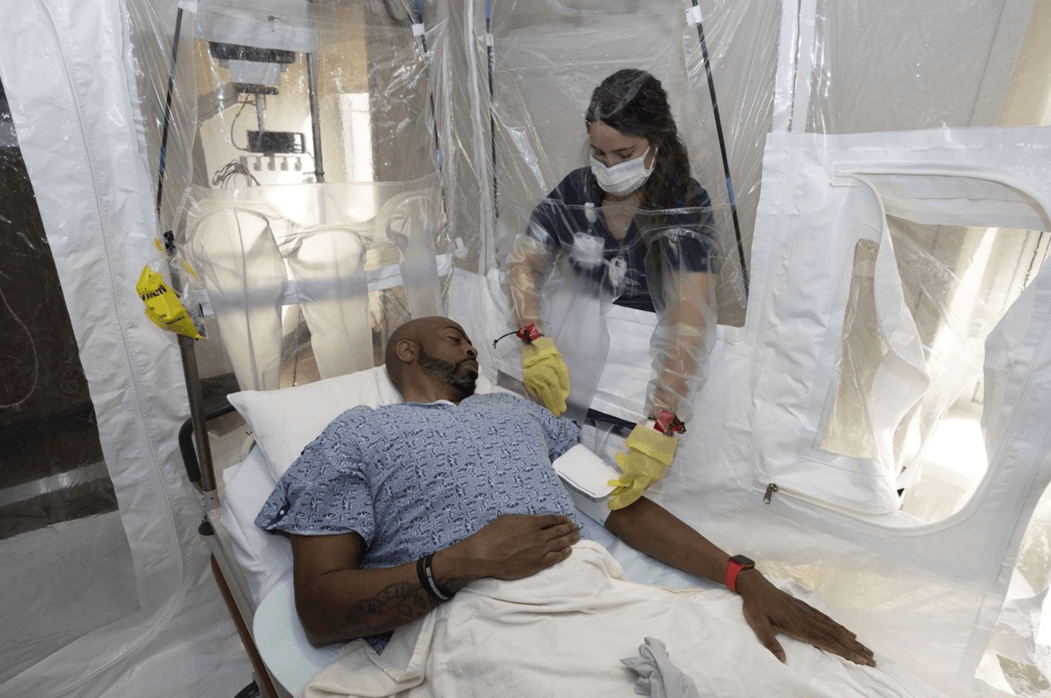What Are the Different Levels of PPE?

The COVID-19 pandemic has introduced a whole new word into the vocabularies of people all over the world: personal protection equipment (PPE). While not a new concept to the millions of people working in healthcare, the rest of us became aware of what PPE is and what it can be used for. You’re probably already familiar with one of the most common varieties of PPE, the face mask. That’s just the beginning.
PPE comes in many shapes and sizes, but every item falls into a “level” or category, from A through D. Each level describes the amount of protection an item gives to the person wearing it and what kind of protection they can expect.
As with anything else, nothing is guaranteed, and no amount of equipment is a substitute for good judgment. That’s why understanding the different PPE levels is important for choosing the right protection.
What is Level D PPE?
Face masks and cloth coverings that most of us wore during the peak of the pandemic don’t count as PPE, according to the FDA. They might qualify somewhat as Level D, which is the PPE level reserved for standard-issue uniforms, clothes, scrubs, etc. This level of PPE is best for “nuisance contamination,” which is likely to be little more than an inconvenience. Level D PPE often comprises the base layer of other PPE with greater degrees of protection.
What is Level C PPE?
The first kind of mask of any kind that appears on the list of PPE is the N95 respirator. Though it looks like a mask, it’s quite a bit more. An N95 respirator is designed to fit very close in order to enable the efficient filtration of airborne particles. Surgical N95 Respirators are commonly used in healthcare settings and are a subset of N95 Filtering Facepiece Respirators (FFRs), often referred to as N95s.
According to the National Institutes of Health, equipment falling within this PPE level is used when the nature of the airborne substance is known and its concentration measured. Level C also requires using air-purifying respirators and periodic monitoring of the air. Skin and eye exposure are unlikely in these scenarios.
Other examples of Level C PPE include full-face or half-mask, air-purifying respirators, chemical resistant clothing (like a one-piece coverall, hooded two-piece chemical splash suit, chemical resistant hood, and apron, disposable chemical-resistant coveralls).
These also often include both inner and outer gloves that provide chemical resistance and steel-toed boots.
What is Level B PPE?
At this PPE level, things are starting to get a little more serious. With Level B situations, people need the highest level of respiratory protection where not as much skin and eye protection is necessary. The NIH recommends Level B protection as the minimum level on initial site entries until the hazards have been identified and analyzed.
That means, essentially, that if you’re going into an unknown situation, you should have at least the amount of protection provided by Level B.
What is Level A PPE?
Have you ever seen a movie where the protagonists, faced with an unknown threat, dress in full-body protective gear, safe from whatever dangerous elements are in the air or the environment? The equipment they are wearing would fall under this PPE level.
While Level B is the minimum for unknown respiratory dangers, Level A is the minimum for chemical and respiratory dangers. This PPE level offers the maximum amount of protection. The hazmat suit, known as Vinyl Technology’s own Defensive Protection Ensemble, is a Level A PPE garment.
All four levels of PPE can be created using industrial sewing methods. Knowing the right PPE level for your needs is essential for ensuring safety and compliance. If you’d like to know more, get in touch with us today.

